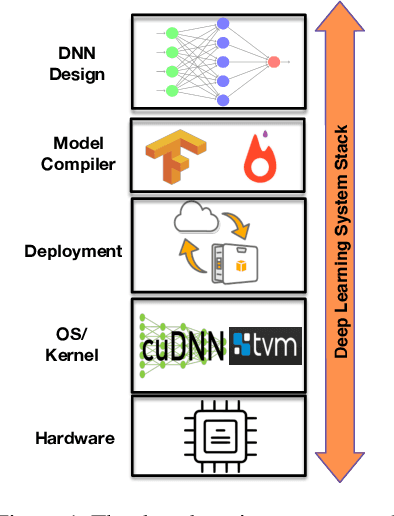Jianhai Su
From Cloud to Edge: Rethinking Generative AI for Low-Resource Design Challenges
Feb 26, 2024

Abstract:Generative Artificial Intelligence (AI) has shown tremendous prospects in all aspects of technology, including design. However, due to its heavy demand on resources, it is usually trained on large computing infrastructure and often made available as a cloud-based service. In this position paper, we consider the potential, challenges, and promising approaches for generative AI for design on the edge, i.e., in resource-constrained settings where memory, compute, energy (battery) and network connectivity may be limited. Adapting generative AI for such settings involves overcoming significant hurdles, primarily in how to streamline complex models to function efficiently in low-resource environments. This necessitates innovative approaches in model compression, efficient algorithmic design, and perhaps even leveraging edge computing. The objective is to harness the power of generative AI in creating bespoke solutions for design problems, such as medical interventions, farm equipment maintenance, and educational material design, tailored to the unique constraints and needs of remote areas. These efforts could democratize access to advanced technology and foster sustainable development, ensuring universal accessibility and environmental consideration of AI-driven design benefits.
FlexiBO: Cost-Aware Multi-Objective Optimization of Deep Neural Networks
Jan 18, 2020



Abstract:One of the key challenges in designing machine learning systems is to determine the right balance amongst several objectives, which also oftentimes are incommensurable and conflicting. For example, when designing deep neural networks (DNNs), one often has to trade-off between multiple objectives, such as accuracy, energy consumption, and inference time. Typically, there is no single configuration that performs equally well for all objectives. Consequently, one is interested in identifying Pareto-optimal designs. Although different multi-objective optimization algorithms have been developed to identify Pareto-optimal configurations, state-of-the-art multi-objective optimization methods do not consider the different evaluation costs attending the objectives under consideration. This is particularly important for optimizing DNNs: the cost arising on account of assessing the accuracy of DNNs is orders of magnitude higher than that of measuring the energy consumption of pre-trained DNNs. We propose FlexiBO, a flexible Bayesian optimization method, to address this issue. We formulate a new acquisition function based on the improvement of the Pareto hyper-volume weighted by the measurement cost of each objective. Our acquisition function selects the next sample and objective that provides maximum information gain per unit of cost. We evaluated FlexiBO on 7 state-of-the-art DNNs for object detection, natural language processing, and speech recognition. Our results indicate that, when compared to other state-of-the-art methods across the 7 architectures we tested, the Pareto front obtained using FlexiBO has, on average, a 28.44% higher contribution to the true Pareto front and achieves 25.64% better diversity.
Ensembles of Many Diverse Weak Defenses can be Strong: Defending Deep Neural Networks Against Adversarial Attacks
Jan 02, 2020



Abstract:Despite achieving state-of-the-art performance across many domains, machine learning systems are highly vulnerable to subtle adversarial perturbations. Although defense approaches have been proposed in recent years, many have been bypassed by even weak adversarial attacks. An early study~\cite{he2017adversarial} shows that ensembles created by combining multiple weak defenses (i.e., input data transformations) are still weak. We show that it is indeed possible to construct effective ensembles using weak defenses to block adversarial attacks. However, to do so requires a diverse set of such weak defenses. In this work, we propose Athena, an extensible framework for building effective defenses to adversarial attacks against machine learning systems. Here we conducted a comprehensive empirical study to evaluate several realizations of Athena. More specifically, we evaluated the effectiveness of 5 ensemble strategies with a diverse set of many weak defenses that comprise transforming the inputs (e.g., rotation, shifting, noising, denoising, and many more) before feeding them to target deep neural network (DNN) classifiers. We evaluate the effectiveness of the ensembles with adversarial examples generated by 9 various adversaries (i.e., FGSM, CW, etc.) in 4 threat models (i.e., zero-knowledge, black-box, gray-box, white-box) on MNIST. We also explain, via a comprehensive empirical study, why building defenses based on the idea of many diverse weak defenses works, when it is most effective, and what its inherent limitations and overhead are.
 Add to Chrome
Add to Chrome Add to Firefox
Add to Firefox Add to Edge
Add to Edge